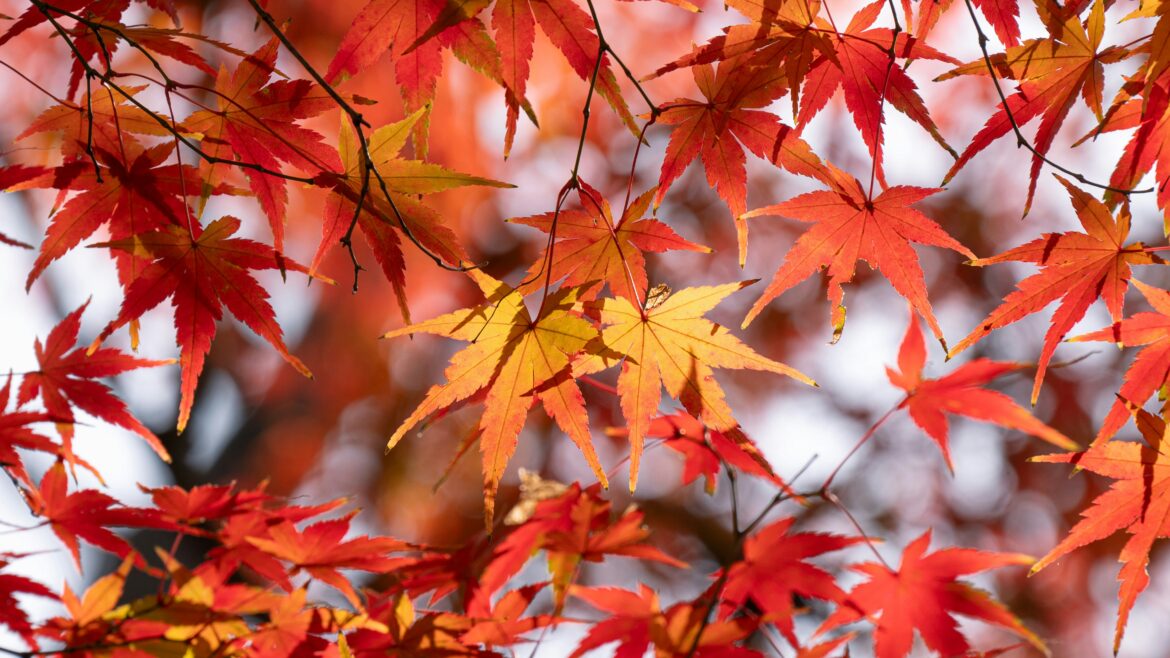Fiery red leaves, gold-lined branches and deep maroon forests – yes, it’s that time of year again!
Autumn is rightly considered one of the most beautiful seasons to witness thanks to its diverse and vibrant foliage paired with comfortably cool weather.
But what are these trees called?
Compared to famous spring flora like Japan’s sakura blossoms or China’s plum blossoms, not many know the names of these fall trees – especially those of us from the tropics.
So, let’s take a look at some of the most famous autumn trees in the world!
So Why do They Change Colour Anyway?
In temperate or four-season regions, plant cells start to die off when the autumn chill sets in. This causes the chlorophyll in the leaves- which gives leaves their green pigment – to die away.
This exposes the remaining carotenoids and anthocyanins, which are responsible for yellow, brown and orange as well as red and purple pigments respectively.
Maples
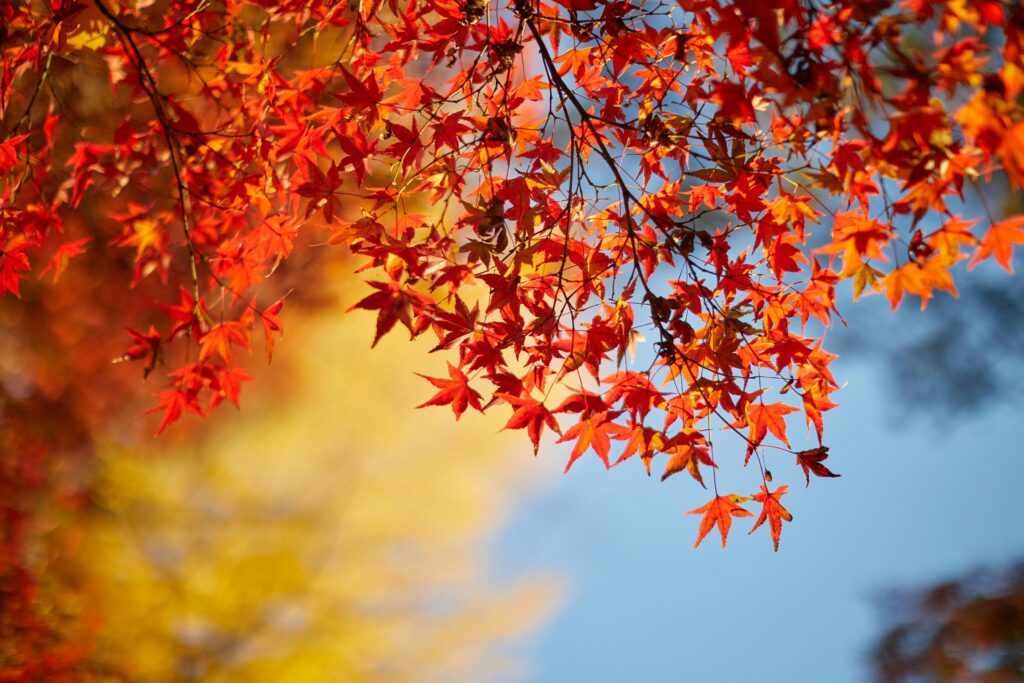
Maples are arguably the autumn tree. I mean, an entire country thought it was pretty enough to put on their flag!
Recognized by their distinctive palm-shaped leaves, maples have long inspired both admiration and awe, particularly in East Asia and North America.
Maples also include a vast variety of species that are planted for their vibrant colours, shade or even their yummy syrup!
Where to Find
Jiuzhaigou, China
Naejang-san, Korea
Poplar
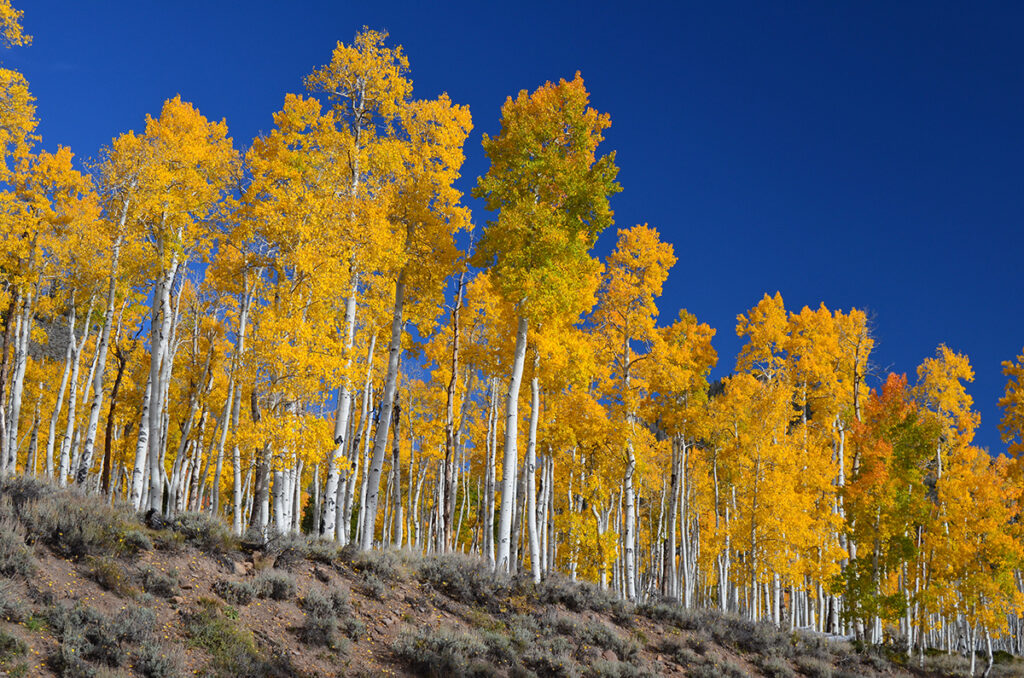
Now this entry is cheating a bit because poplar refers to a genus or group of species also includes other famous autumn trees such as aspen and cottonwood.
Although hugely diverse, the famous autumn poplar species are generally recognized by their greyish, almost bone-white bark as well as scar-like lenticels on older trees.
In fact, an entire quaking aspen forest called Pando is considered the world’s largest tree by sheer weight. This is because all the “trees” share the same roots, making them the same tree!
Where to Find
Pando, Utah, USA
Wanaka, New Zealand
Ginkgo
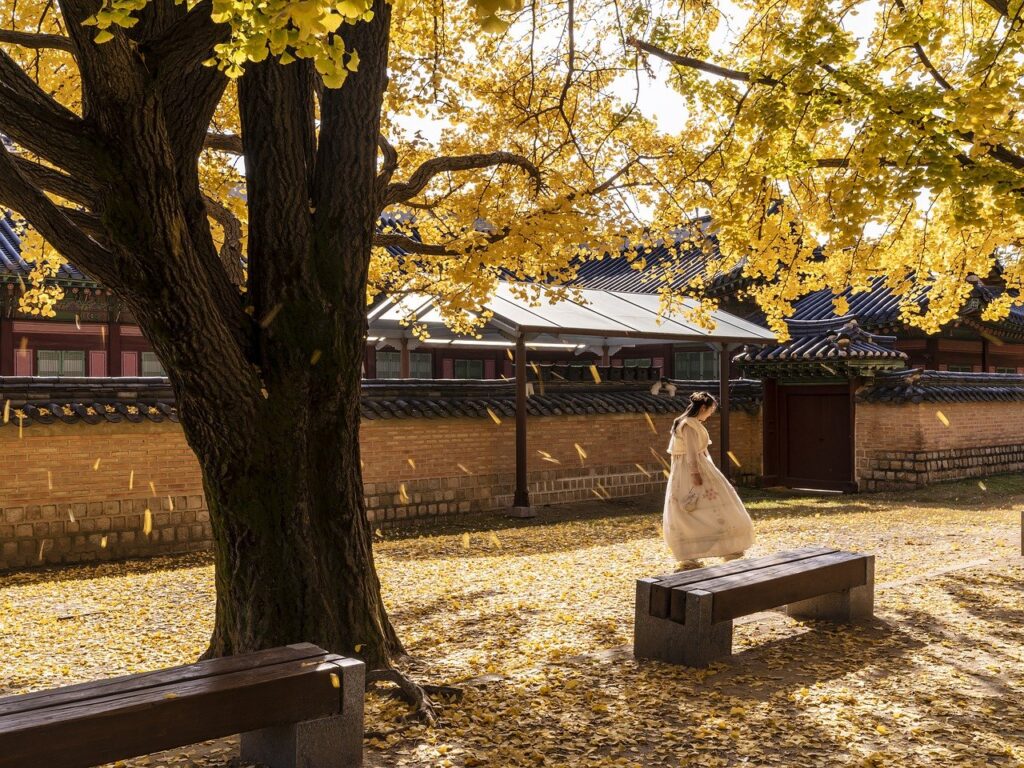
Immediately recognized by its brilliant saffron gold hues and extremely unique and distinctive fan-shaped leaves, the ginkgo is yet another favourite fall tree.
Its odd name is due to a misspelled German translation of its Japanese name ginkgo or “silver apricot”. Hailing from China, where its seeds are a delicacy, the name was also inspired by its Chinese name yinxing.
Incredibly ancient (200 million years old!) and resistant to diseases, some ginkgo trees can be centuries old such as the ginkgo tree in the Kew Gardens, first planted in 1759!
Trivia: Watch out for female ginkgo trees, as their fruit give off a rancid, rotten smell! Thankfully, most planted ginkgo trees are male.
Where to Find
Meiji Jingu Gaien Park, Japan
Tengchong, China
Gyeongbokgung Palace, Korea
Birch
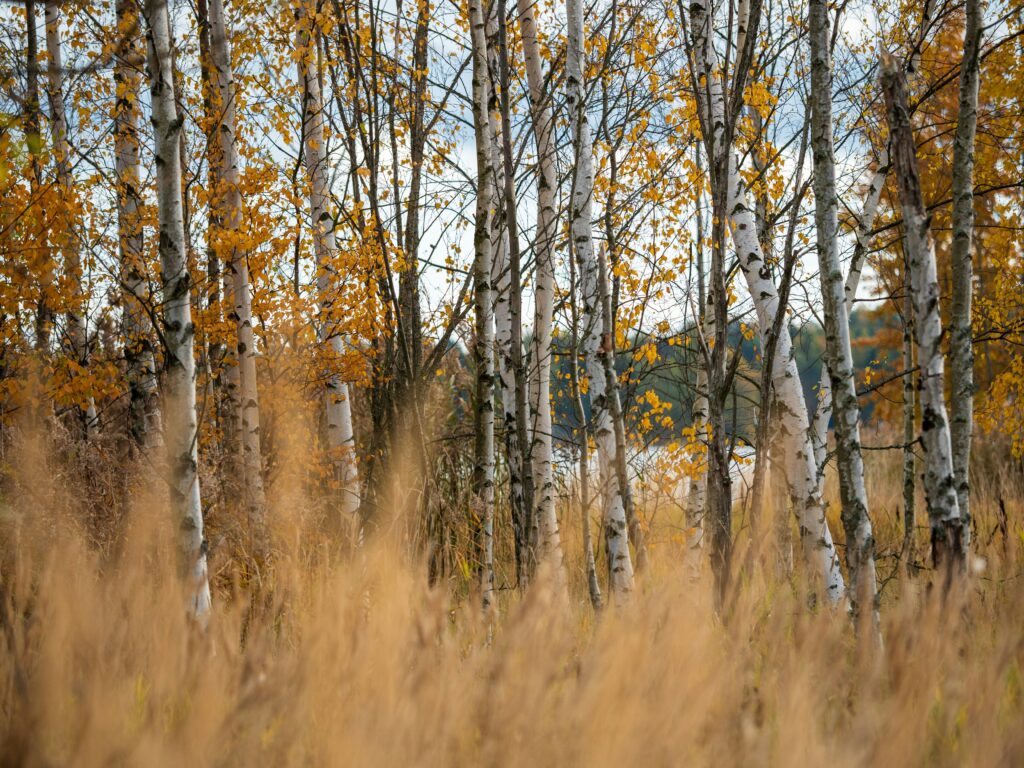
The namesake of a certain British colonial official who met an unfortunate end in Malaya, birch trees are fall trees native to the forests of the Northern Hemisphere and grow in pleasingly straight trunks.
In spring, they grow pretty flower clusters called catkins that droop down in huge curtains. Unusually, these clusters can be both female and male.
Like poplars, some birch species feature peeling bark that reveals a bone-white colour underneath, creating a beautiful contrast against their amber and aurum leaves.
Trivia: The bark of birch can be used for paper, firewood or even waterproofing for canoes!
Where to Find
Wondae-ri Birch Forest, Korea
Peneda-Gerês National Park, Portugal
Tateyama Kurobe Alpine Route, Japan
Beech
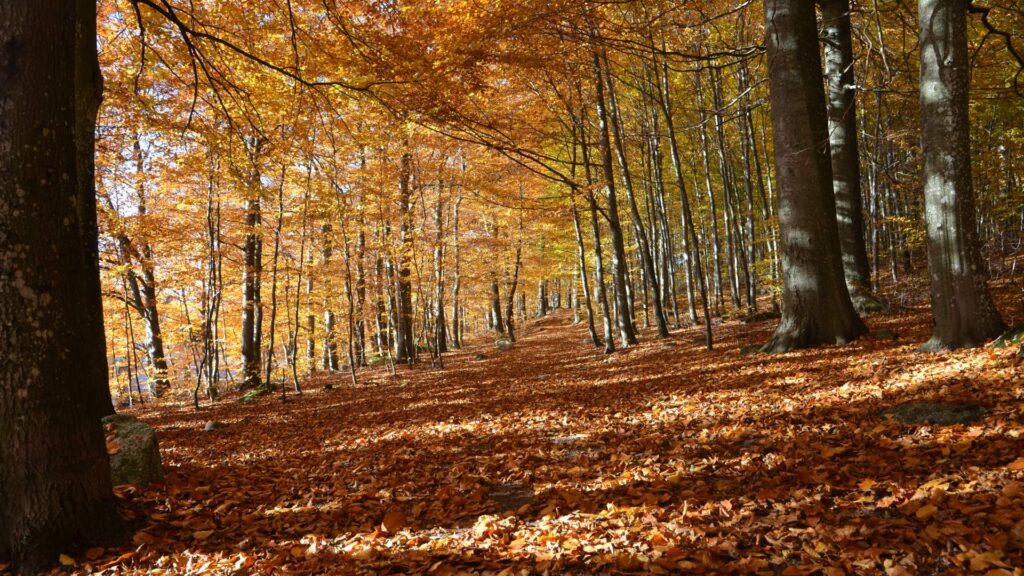
Closely related to birches, beeches are one of the most common autumn trees around the world, particularly in Europe and North America.
Thanks to its broad oval-shaped leaves and huge forests, its gold and bronze palettes can be even seen from space! It’s not just looks though, as this hardwood is popular for its cheap cost, toughness and bending properties
As an aside, the beech’s misleadingly-named (false) cousin, the southern beech or Nothofagus (false beech) is an autumn tree that graces the grasslands of Patagonia in South America.
Where to Find
Bokeskogen Beech Forest, Norway
Söderåsen National Park, Sweden
Taipingshan Beech Trail, Taiwan
Cypress
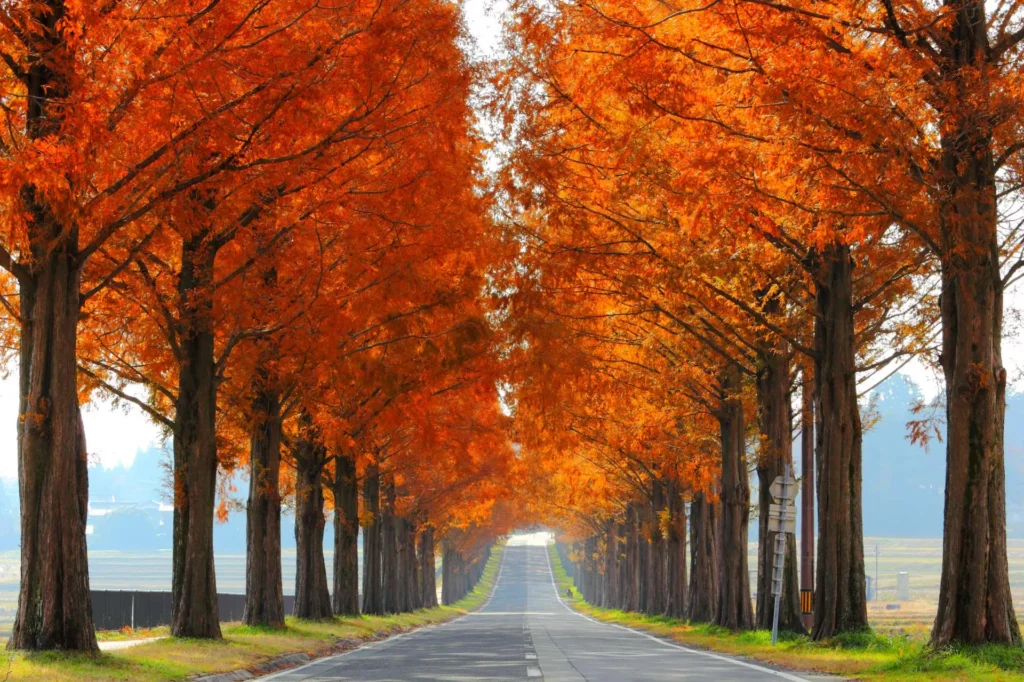
Imagine a Christmas tree…but red!
That’s how the cypress and its (mostly) cone-shaped foliage greet the moody twilight of autumn.
The cypress or Cupressaceae family competes with ginkgo as one of the world’s most long-lived tree species, with many cypresses ranking high on the list. They also boast some of the world’s tallest living trees among the redwoods of California.
In autumn, the bottom-heavy bald cypress forests of Louisiana, USA explode in a conflagrations of foliage that reflects perfectly off the region’s swampy waters.
Where to Find
Lake Martin, Louisiana, USA
Lin Feng Ying Cypress Forest, Lin Feng Ying, Taiwan
Makino Dawn Redwood Avenue, Japan

If you’re feeling the call of autumn, how about some of Europe’s best autumn sights on a budget or the underrated fall mountains of Northern Greece?
Links
NASA Earthdata – Autumn Foliage in Eastern Asia: A View from Space
https://www.earthdata.nasa.gov/learn/data-in-action/autumn-foliage-eastern-asia-view-from-space
Earthwatch Europe – Autumn trees: how to identify them
https://earthwatch.org.uk/blog/autumn-trees-how-to-identify-them/
Roots – Ginkgo Tree Facts
https://www.rootsplants.co.uk/blogs/features/ginkgo-tree-facts
Kew Gardens – Ginkgo tree
https://www.kew.org/plants/ginkgo-tree
Britannica – Birch
https://www.britannica.com/plant/birch

